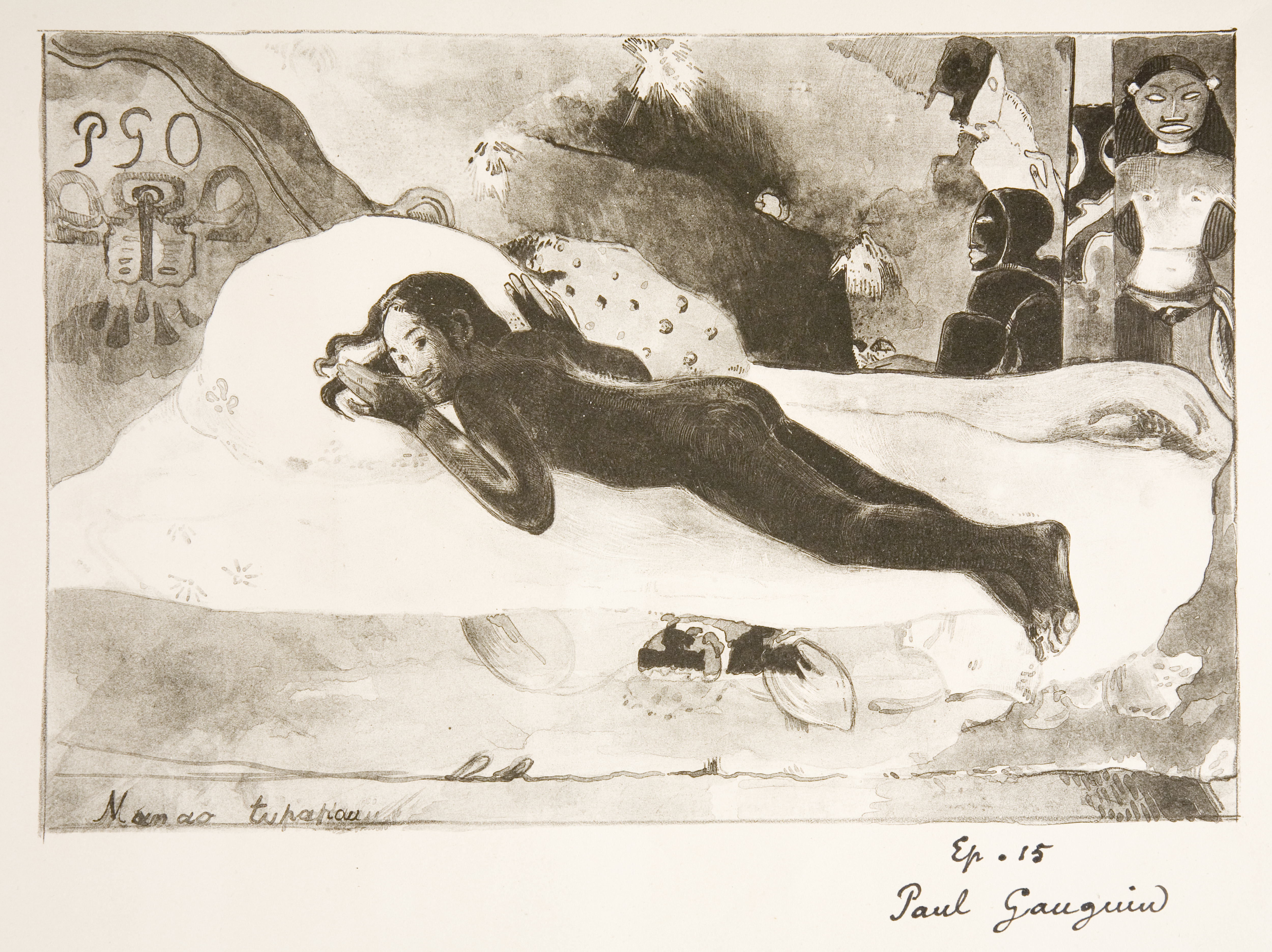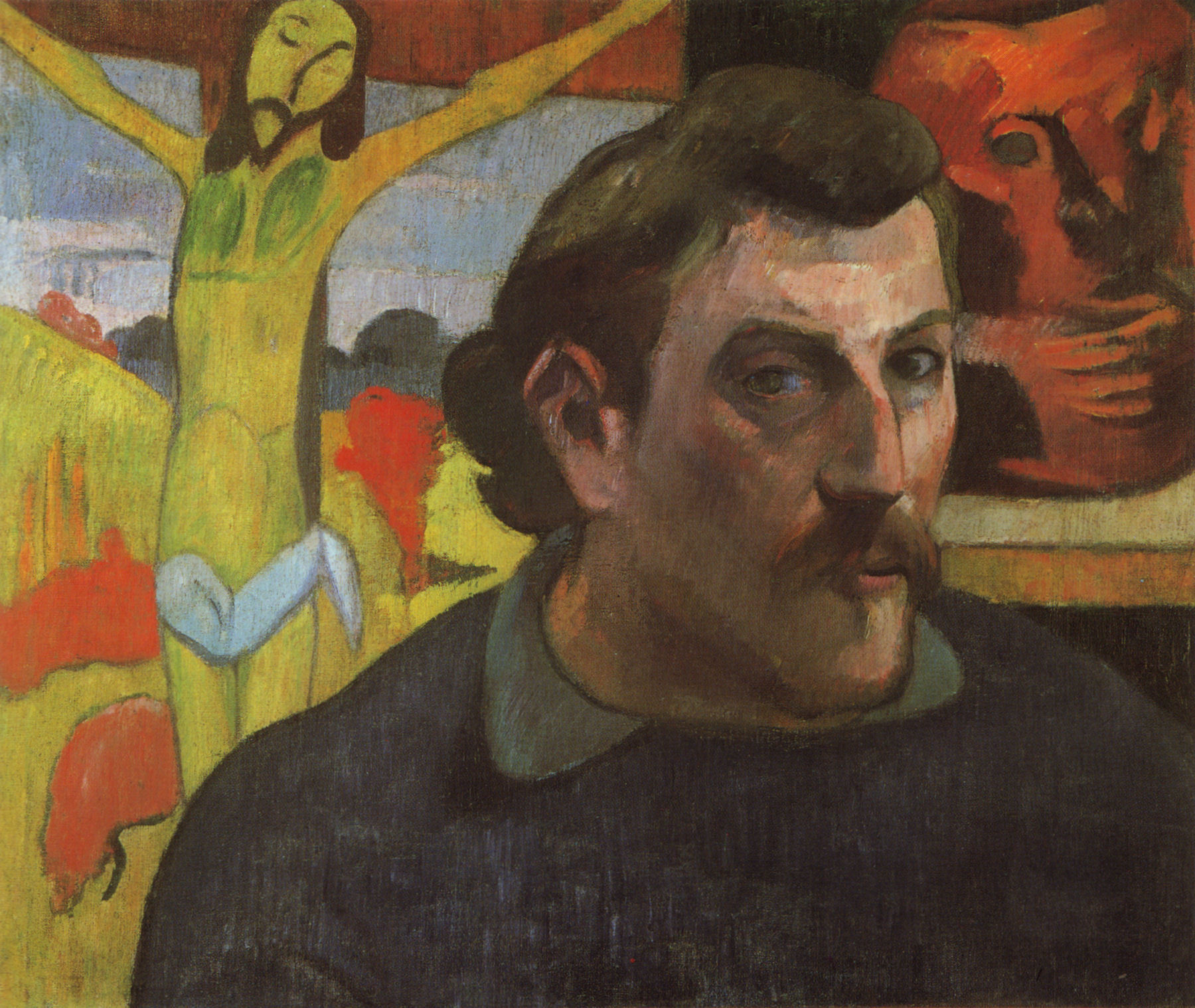For the next five weeks every Saturday we will present late 19th and early 20th century prints from the collection of the National Museum of Krakow (Poland). They are magnificent! Today we start with Gauguin, whose painting of a similar subject we presented in DailyArt a couple of months ago. Sorry for the long description today - but it is worth it!
This print references a theme which appeared in Gauguin's art in 1892. An oil painting of the same title was created during the painter's stay in Tahiti, where he bonded with the local population and learned about the culture of Polynesia. The protagonist of this depiction is Tehura, the painter's partner and the embodiment of Polynesian beauty. According to Gauguin’s own description the scene was inspired by one evening’s events when, returning from town late at night, Gauguin found Tehura, “motionless, naked, lying on the bed face down, with her eyes wide with fear.” The woman – who in accordance with the customs of her people always slept with the light on – had taken fright at spirits when the lamp ran out of oil. All versions of the same theme (Gauguin also recreates it in pastel and woodcut techniques) are entitled Manao Tupapau, which in Tahitian means both, “she's thinking about the spirit” and, “the spirit of the dead is watching”. Polynesian beliefs are strongly associated with death and the presence of spirits on earth. ‘Tupapau’ does not mean ‘ghost’, but rather someone returning from the land of the dead who could haunt the living, or enter their bodies. Hence the woman's fear and the ambiguity of the title.
From a European point of view Gauguin allows for the existence of spirits permeating the world of the living to be presented in irrational inability to sleep with the lights off. The hooded figure sitting behind the bed, as well as the accompanying figures, are probably visitors from the afterlife. Gauguin also depicts characteristic lights reflected on the wall of the room, this is the phosphorescence which, if seen at night, was considered to be a sign of the presence of spirits; the painter himself perceived them as lights produced by fungi growing on the trees. This scene is interpreted as Gauguin's response to Manet's Olympia – a nude portrait of Manet’s mistress portrayed in a provocative pose meant to cause scandal.
According to Gauguin the scene was never intended as obscene but rather as portraying the Polynesian Venus – a new canon of beauty, far from a “civilized” European image of the ideal nude, white woman. The theme recreated in the lithograph differs from the original painting in several important details, particularly in the number of figures hiding behind the bed and the monochrome mirror reflection of the whole scene. Interestingly, this print is the only lithograph made by the artist directly on stone (the other works were zincographs). It was created after his return to France. 100 copies were printed and it was published in L'Estampe Originale, a Parisian publication presenting the latest in printmaking achievements. One of the copies found its way to Feliks “Manggha” Jasieński's impressive collection of French prints, which he bequeathed to the National Museum in Krakow.


 Paul Gauguin
Paul Gauguin